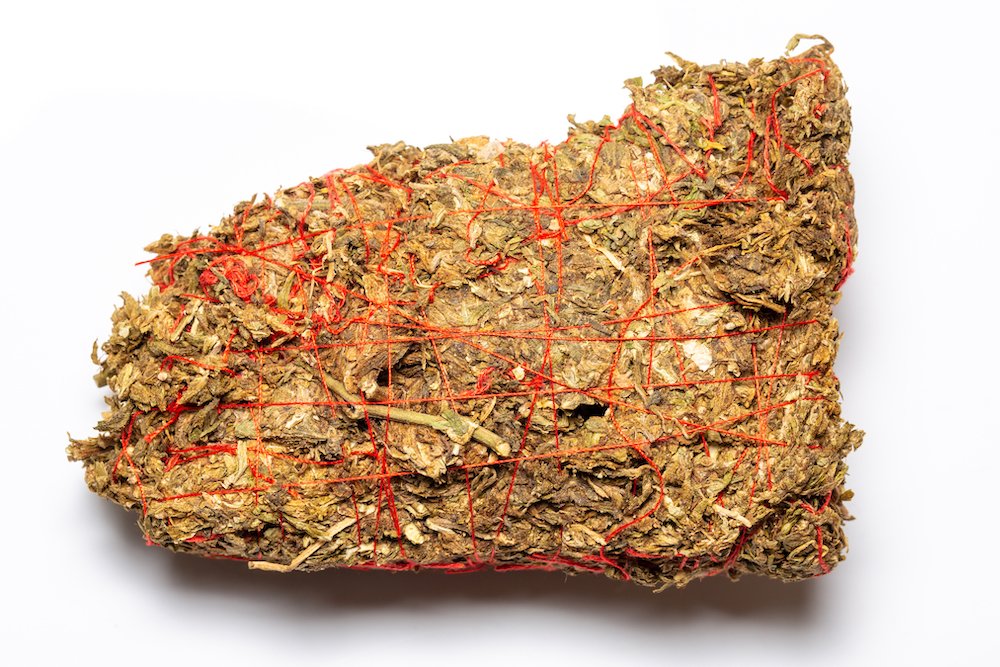One of the favorite topics for old-timers and vintage cannabis enthusiasts are the famed Thai Sticks. But what exactly is a Thai Stick? Some say it’s a rare strain that went extinct, some say it’s a rolled-up cigar, and others say it’s weed dipped in opium. Turns out, it’s none of the above.
What is a Thai Stick? Is a Thai Stick a cigar?
The term Thai Stick refers to a packaging method that is common in parts of Southeast Asia. When bringing goods to market, they are often tied to a stick for transport and bundling. It’s an easy way to portion goods without a scale, similar to the way vegetables at an American farmers market are bundled with rubber bands. It’s important to note that Thai sticks are just containers, not smokable cigars. Instead of pulling buds out of a bag to break them down and smoke them, you pull a bud off of the stick.
As far as smoking the Thai Stick like a cigar, it may be possible to pull out the stick and wrap it in a paper, but traditional Thai Sticks never came pre-wrapped due to the risk of mold.
Is Thai Stick also a strain?
Another point of confusion is that Thai Stick refers to a particular landrace strain or cultivar group, but again, it only refers to the stick that buds are wrapped around, not the type of weed. The ‘tropical sativas’ imported from Thailand during the ‘70s and ‘80s would have been distinct to American consumers, but included many different varieties. In that sense, the Thai Stick that made it to the United States would be very unique, but in those days, strains weren’t labeled like they are today, and names like “Acapulco Gold” referred more to everything that came from a certain region rather than one specific strain.
In the 1970s, the classic Thai Stick would have come in several varieties from many different farmers, but it was generally expected to have a strong and long-lasting ‘pure sativa’ effect. As time went on, imported Thai Stick was hybridized and grown on larger and larger farms that produced less variety than the small farmers who originally supplied American smugglers.

Were Thai Sticks dipped in or sprinkled with opium?
No. It probably happened from time to time, but it never happened on a large scale for several reasons. For one, the wholesalers for marijuana and opium were not the same people, and their crops grew in completely different parts of Thailand and the surrounding region. Two, it just doesn’t make sense economically. Opium was much more expensive and the cost of Thai Stick in the United States was already many, many, many times higher than competing products. Third, it’s a logistical problem. Lacing marijuana with dry opium would be tricky and wasteful, while dipping buds in an opium solution is risking total crop loss due to mold or mildew growth.
There’s probably two reasons this myth is so pervasive. The first being that Thai weed was (and still is) really, really strong. Due to various environmental conditions, it’s practically impossible to grow weed that’s as sticky in the United States, with the exception of Hawaii. We’re talking coated in resin, enough that it will literally stick to the wall and stay there. On top of that, most of the cannabis in the United States comes from hash plant strains which weren’t selected for smoking flowers, whereas Southeast Asian farmers selected for potency and effects without making hash first.
The second reason has more to do with the War on Drugs and propagating fear, which is still common today. We are constantly bombarded by myths about weed laced with fentanyl. Before that it was PCP, and even earlier it was opium. Very few examples of these products actually exist, but that doesn’t stop headlines from stirring things up, and so the cycle continues.

What does a Thai Stick look like? How big was a Thai Stick?
In an interview with the Future Cannabis Project, smuggler Mike Ritter breaks it down, saying, “A typical Thai Stick was about five and half inches long, it was a piece of bamboo. Later on they made them short, this and that, but that was a typical Thai stick. Those were bundled together in units of twenty, and that was a bundle, twenty Thai sticks, and then those were put in a bag of a hundred bundles … that weighed about three and half kilos.” That big bag of bundles was called a toom.
As time went on and smuggling operations scaled into sophisticated operations, these bundles were pressed for packaging in a way that resembled ‘brick’ weed more familiar to most Americans. This was usually still called “Thai Stick” even though it was no longer tied to a stick.
How much did one Thai Stick cost? Do Thai Sticks still exist?
It’s hard to believe, but in the 1970s, good Thai Stick went for $2000+ a pound. Adjusted for inflation, that’s about $10,000 a pound! At the time, Acapulco Gold, Panama Red, and Columbian Gold would have sold for around $200 a pound ($1,000 in today’s dollars). Even though the highest-end exotics on today’s market can fetch up to $10,000 a pound, that’s not the tenfold increase over competing products that Thai Stick sold for.
Adjusted for inflation, an eighth of premium Thai Stick could have gone for $350, which means it was a highly exclusive product reserved for wealthy Americans. So while Thai Stick certainly doesn’t have the look that appeals to the modern high-end market, it has effects that can’t be easily replicated, and in those days, nothing was more exotic than that. Whether or not those legendary products will ever return to market is hard to say.
